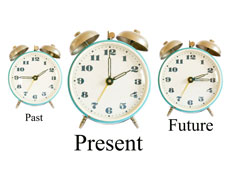James Flanagan concludes his overview of an ever-changing part of the L&D world.
The transformation in the number and type of apprenticeships began in the late nineteenth century when apprenticeships had spread from artisan trades such as building and printing to the newer industries of engineering and shipbuilding – and later to plumbing and electrical work.
Currently apprenticeships are available in all sectors and industries throughout the country. There are more than 200 different types of apprenticeships available offering over 1,200 job roles, in a range of industry sectors, from engineering to boat building, veterinary nursing to accountancy.
By the mid 60s, although there were nearly a quarter of a million people in apprenticeships there were growing concerns about the effectiveness of apprenticeship training in the changing socio-economic environment. The range of occupations available to people was expanding but apprenticeships were perceived as being stuck in the past and unable to respond to the changing needs and opportunities. They were considered to be male-dominated and there was a sense of serving one's time rather than achieving or delivering a planned or targeted outcome.
 "By the mid-60s, the range of occupations available to people was expanding but apprenticeships were perceived as being stuck in the past and unable to respond to the changing needs and opportunities."
"By the mid-60s, the range of occupations available to people was expanding but apprenticeships were perceived as being stuck in the past and unable to respond to the changing needs and opportunities."As the socio-economic changes continued, the same attitudes and perceptions persisted to take their toll and eroded numbers until 1990 when the 'average in learning' numbers had decreased to 53,000. The reduction in numbers was fuelled by a number of factors, including the increase in the numbers of post-16 year olds continuing in full-time education, a lack of public funding for apprenticeships, and the effect of the Youth Training Scheme and Youth Opportunity Programme. These two initiatives catered for young people who might otherwise have done an apprenticeship. At the time the quality of provision was often questionable and the perception that these programmes were an exercise to reduce the unemployment figures contributed to the poor perception of vocational training.
As the socio-economic conditions and attitudes from the 60s contributed to the decline in the numbers of those in apprenticeships it appears current socio-economic conditions and attitudes are now contributing to the reversal in their fortunes and leading to an increase in numbers and perceptions about them.
In almost all countries, Germany being a good example, that have a sizeable and successful apprenticeship programme it has been achieved with state support. In response to concerns about skills shortages, especially at intermediate levels, in 1993 the Government announced plans for a new apprenticeship scheme. Prototypes were introduced the following year and the scheme became fully operational in 1995. The modern apprenticeship is focused almost entirely on occupational competence.
Since 1997, a number of the programme elements have been reformed including: who is responsible for the inspection of the providers of the training; the number of levels of apprenticeships; who is responsible for the funding; the introduction of the technical certificate to explicitly require theoretical knowledge from the apprentices and to the re-branding of the apprenticeships 'family' in 2004.
The result of these changes, coupled with the increased investment made by the Government is a significant improvement in both the number and quality of apprentices. In England, in the 2009/10 academic year there were 279,700 apprenticeship starts compared to 239,900 in 2008/09. Completion rates, a key performance indicator, shows apprenticeship recruitment practice and quality have improved significantly, in 2009/10 completion rates were 74% compared to 37% in 2004/05.
Apprenticeships have stood the test of time and boast a formidable gallery of graduates including Leonardo da Vinci, Alexander McQueen, Billy Connolly, Sir Alex Ferguson, Elvis Presley, Eric Clapton, Gordon Ramsay, Jamie Oliver, John Frieda and Ross Brawn. They not only come with a long history of apprentices' contribution to our society but especially, they offer a cheaper but equally effective alternative to other forms of education.
James Flanagan is training director of a consultancy specialising in positive leadership and has worked as a trainer and a management development consultant in a broad range of companies including IBM, Lilly, Harley Davidson, BUPA and UNICEF









